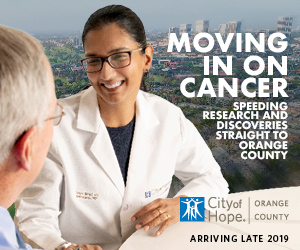 Condolences to family, friends and community members feeling the loss of rapper Nipsey Hussle, who was born Ermias Joseph Asghedom and made a mark with more than music under his adopted moniker in South LA.
Condolences to family, friends and community members feeling the loss of rapper Nipsey Hussle, who was born Ermias Joseph Asghedom and made a mark with more than music under his adopted moniker in South LA.
It’s been a while since gang-related crime has gripped the city’s consciousness and prompted the sort of discussion that has been touched off by Hussle’s murder. The shooting was taken by some as the latest indicator that the bad old days that started with the advent of crack cocaine and had a 20-year run on the streets of SoCal might be creeping back into action.
The seeming trend comes after enough years of relative calm – the sense of public safety remains insufficient in too many neighborhoods, but we are nearly a full generation removed from the peak years of bloodshed on the streets.
 Consider this photo from an alleyway in a residential neighborhood well north of the 10 Freeway. The area is generally well-kept otherwise, which makes this mark stand out all the more.
Consider this photo from an alleyway in a residential neighborhood well north of the 10 Freeway. The area is generally well-kept otherwise, which makes this mark stand out all the more.
I’m not sure if the mark was left by a gangster or one of the simpler vandals known as taggers. The letters and inclusion of “X” make it possible that it tracks to a gang set, though.
I am sure, in either case, that the mark was left in the sort of neighborhood that was modestly priced and largely overlooked by the gentry in the early 2000s, when gang violence was still flaring widely in LA.
A number of factors led to steep reductions in gang violence in much of the city. Then came the Great Recession, followed by the grand resurgence of residential real estate that’s pushed prices to record levels in these parts.
And that puts this mark – whether it’s from a gangster or a tagger – smack dab in the middle of million-dollar homes.
That’s a new challenge with a lot of aspects.
It’s not the only one that puts SoCal on point when it comes to the changing landscape as the life of our nation and society flows forward, as the next item illustrates.
Marksist Evolution in LA?
Please don’t read Howard Marks’ latest memo unless you’re willing to spend a half hour or so to read it deeply.
And please don’t utter one more complaint about today’s dysfunctional political climate unless and until you’ve done so.
This applies especially if you’re a millennial who might be feeling frustrated because you’re not anyone’s unicorn and just might have a few gaps in your education when it comes to the dynamics of the real world. And Marks didn’t say that — I did.
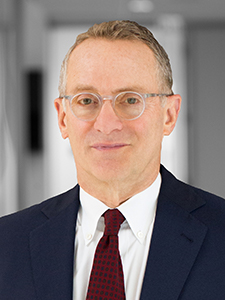 Back to Marks, who is the legendary co-founder and co-chairman of Downtown-based Oaktree Capital Management and a globally renowned and respected economic analyst and commentator. The folks who drive markets around the world read Marks’ memos deeply.
Back to Marks, who is the legendary co-founder and co-chairman of Downtown-based Oaktree Capital Management and a globally renowned and respected economic analyst and commentator. The folks who drive markets around the world read Marks’ memos deeply.
You should make the same investment of a half hour every couple of months regardless of how you make your living. Marks ultimately offers insights on markets, but he understands that markets are made up of people – and people are the stuff of politics.
Marks also is a guy whom the LA business media just don’t seem to get. Example: The recent sale of a majority stake in the company he co-founded to Toronto-based Brookfield Asset Management didn’t even crack the front pages of local legacy media, leaving a deal that valued home-grown Oaktree at $7.7 billion largely unexamined.
What little local coverage followed focused on Marks’ age.
Fair enough – he is 72, and his age was no doubt a factor in the deal, likely a chief basis for a desire to establish a new avenue that will allow him to eventually cash out of his stake in Oaktree.
Also fair to note that anyone who reads Marks’ memos deeply will realize that age hasn’t prevented him from developing an understanding of the new generation of politically charged youth – a cohort that claims the “progressive” mantle, openly embraces socialism as an operating ideology, and increasingly bashes big business as a bad actor in the economy.
 Marks seems to be keenly aware of – and generally opposed to – many of the left-leaning sentiments evident on the campaign trail for the 2020 Democratic nomination and in the highly publicized rhetoric and actions of Congresswoman Alexandria Ocasio-Cortez of New York.
Marks seems to be keenly aware of – and generally opposed to – many of the left-leaning sentiments evident on the campaign trail for the 2020 Democratic nomination and in the highly publicized rhetoric and actions of Congresswoman Alexandria Ocasio-Cortez of New York.
Marks’ writings indicate that he has offered the highest form of respect to Ocasio-Cortez and the rest of the left – he has, it seems apparent, listened closely to their commentary, critiques and challenges.
He also shows respect by conceding some points of common ground, clearly stating that there is good reason to close the growing wealth gap that has stratified the economy of the US.
Marks ultimately pays respect to the left leaners by engaging their critiques and challenging them with his intellectual best. His most recent memo offered an unvarnished response to Ocasio-Cortez’ recent critique of the $3 billion worth of tax breaks for Amazon.com Inc., which eventually decided to skip plans to put part of a new headquarters operation in New York when the congresswoman and others on the left cried foul about the deal.
Here’s a small part of what he wrote in his most recent memo:
I don’t mean to single out Ocasio-Cortez, and I have nothing against her. But she is the most prominent spokesperson for the approach that so troubles me, and what she says exemplifies that which I want to resist … There was no $3 billion sitting in a city bank account, waiting to be spent on either subsidies for Amazon or enhanced services for New Yorkers. The $3 billion going to Amazon wouldn’t have represented a diversion of resources from other potential uses. It consisted entirely of contingent future payments: the part that would be kicked back to Amazon from the taxes it would pay, the balance of which could be used to support infrastructure or services. No Amazon, no $3 billion paid out (and no $24 billion of net taxes received by the city and state). Ocasio-Cortez either (a) completely misunderstood the deal she was criticizing or (b) overlooked the facts in favor of rhetoric calculated to play on resentment and scare up votes.
Tough stuff about a star of the Twittersphere. Ocasio-Cortez has even joined the ranks of folks so famous that an acronym will do – AOC in her case.
Tough with a point, though.
And a valid starting point for the sort of tough conversation that’s needed.
The great strength of America lies in the spirit of compromise fostered by the terms of the US Constitution. That’s what has made the American Experiment an exercise in effective evolution rather than a series of destruction revolutions.
You can find Marks’ memos on Oaktree’s website.
Let the evolution begin.
State’s Distinction on Census Gives OC New Status
There is more than the obvious news to consider with the latest word from Charitable Ventures of Orange County, a nonprofit incubator based in Newport Beach.
We’ll start with the obvious, though, because it is definitely worth noting: The nonprofit has been designated the “Regional Administrative Community-Based Organization” for outreach efforts by Complete Count California – Census 2020 Office, a state agency.
The status as lead agency for OC as a region comes with $1.4 million in funding from the state for programs to encourage participation in the every-10-years census, with a particular focus on the “hard-to-count.”
The US Census Bureau lists segments of the population ranging from “low-income persons,” “persons who do not live in traditional housing” and “highly mobile persons” – descriptions that seem to cover the poor and homeless – to “non-English speakers,” “persons who do not trust the government” and “undocumented immigrants” – all of which appear aimed at portions of the population not born in the US.
OC likely has significant populations in all of the hard-to-count categories scattered everywhere from modest residential neighborhoods from Brea to Dana Point to motels strung along Beach Boulevard. Charitable Ventures estimates that between 750,000 to 800,000 individuals – about a quarter of OC’s population – are hard to count.
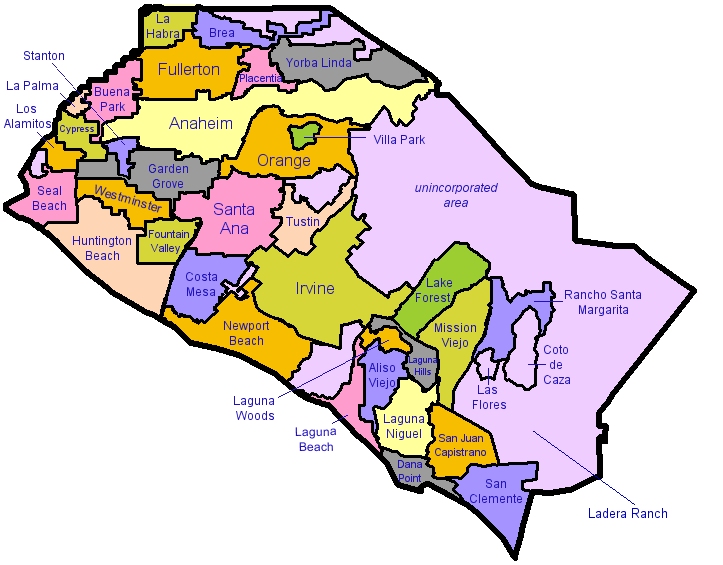
Counting them matters because the data compiled by the US Census sets a baseline for how federal resources are allocated in many areas. The data also is used by many state and local government agencies on determinations regarding everything from Medicaid to schools and roads. And the private sector uses it as a point of reference on all sorts of decisions big and small.
Charitable Ventures has lined up lots of help for its pending challenge in the form of “a collaborative of funders and non-profits.” Representatives of the organizations will make up an Administrative Community-Based Organization Executive Team, with participation from Access California Services, Community Action Partnership of Orange County, First 5 Orange County, OC Human Relations, Orange County Asian Pacific Islander Community Alliance, Orange County Community Congregation Organization, Orange County Community Foundation, Orange County Grantmakers, Orange County United Way, NALEO Educational Fund and the California Endowment.
Charitable Ventures also plans to supplement the state funding it’s been awarded with a “pooled Census Fund, comprised of private philanthropic dollars.”
 “Charitable Ventures is honored to be named the ACBO for Orange County,” said Anne Olin, chief executive of the nonprofit. “And we are honored to be working alongside some of the most trusted, innovative, civically engaged nonprofits in our region. Together, we’re determined to reduce barriers to achieving an accurate count next year.”
“Charitable Ventures is honored to be named the ACBO for Orange County,” said Anne Olin, chief executive of the nonprofit. “And we are honored to be working alongside some of the most trusted, innovative, civically engaged nonprofits in our region. Together, we’re determined to reduce barriers to achieving an accurate count next year.”
Now for the less obvious but nonetheless noteworthy aspect of the role Charitable Ventures and its fellow organizations will play on the US Census: OC was recognized as one of 10 distinct regions as part of a key effort to understand the state and its component parts in preparation for the pending attempt to get an accurate count of California’s population.
That’s progress – the federal government still tends to lump LA and OC together when it comes to data. That’s a habit that’s long out of date—OC is the sixth-largest county in the US with 3.2 million, a circumstance that often gets overlooked because it happens to be next door to Los Angeles County, which tops the list at more than 10 million residents.
Kudos to the state planners at Complete Count California for making the distinction and giving both LA and OC their due on this crucial matter.
![]()
Get Ready for Different Kind of Rumble Over LAX
The headlines glossed over the obvious last week, but brace yourself anyway for a long, hard slog of dueling PR and legal standoffs between LAX and neighboring small towns over the facility’s plans to add a terminal – designated as Terminal 9 – east of Sepulveda Boulevard among other features of its next expansion plan.
The City of LA owns the airport and gets much of the benefit of the facility as an economic engine.

Smaller towns around LAX – including Inglewood, Hawthorne and El Segundo, to name the closest – draw significant benefits but also pay a significant price in terms of noise and other disruptions to everyday life. Those cities also have traditionally struggled to have some say in how the facility has expanded over the years.
Some of the initial reports on the latest expansion plan, which would come on the heels of the current $14 billion building spree at LAX, failed to point out a key factor that could scuttle a truce of sorts that the facility has maintained in recent years with its neighbors.
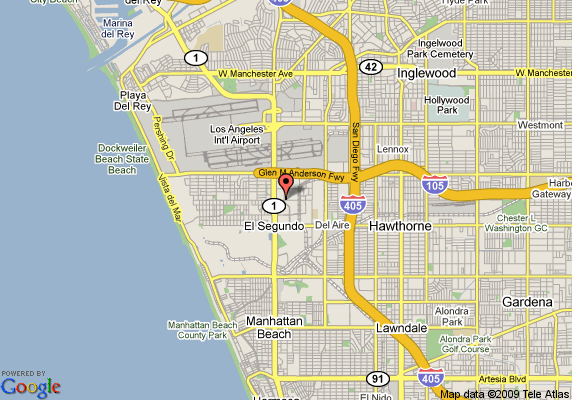
The truce has been based on a generally accepted cap on gates at the facility. The number of gates largely dictates the number of flights in and out of LAX, which are perhaps the biggest irritants for residents of the small towns at this point.
The cap was set at 153 gates under an agreement reached between LAX and its neighbors – and it was generally understood that it would translate to a maximum of 78.9 million passengers a year.
New designs of aircraft allowed the facility to handle nearly 90 million passengers last year without surpassing the limit on gates – LAX is expected to hit 153 gates on the nose early next year, when the facility adds 12 as part of its current expansion.
The neighboring towns haven’t raised any stink about that plan.
The new terminal – which LAX hopes to have up and running in time for the 2028 Olympics – is different because it would add more than 20 gates. There’s been talk of those additions being offset by closures of other gates—and we’ll see about that.
It’s likely, however, that the gate count will become meaningless as LAX marches towards an annual passenger count of 106 million even before the Olympics arrive – an estimate suggested a year ago by the Southern California Association of Governments.
The regional planning organization assesses capacity and makes annual passenger estimates based on local roadways and ground traffic generated by the airport – a factor that differs fundamentally from the number of gates or flights.
The total of 106 million passengers a year is about 30% more than the airport’s total now – the sort of increase that’s bound to raise concerns even if all those passengers go through 153 gates. The sheer increase in numbers and the construction of a terminal east of Sepulveda hold the potential for a ripple effect on neighboring towns.
Need more fuel for a potential fire of bad feelings? The limit on the number of gates is set to expire next year.
It looks like neighborly feelings might expire, too – and the key to this story will be overall growth of passenger traffic rather than the number of gates or flights.
Family Affair for White Retrospective at LACMA
There’s plenty to debate about plans for the new main building in the Los Angeles County Museum of Art‘s future.
Here’s a report, meanwhile, from the institution’s living and breathing mission to connect with the public it serves.
Look at the little boy pictured here in the arms of famed artist Charles White and hold that thought.

Now some words about the artist’s son, C. Ian White, and one of his acolytes, Richard Wyatt, Jr.
The pair recently took the time to guide a group through an exhibit of their late elder’s works at LACMA.
“Charles White: A Retrospective” is one of several current exhibits in LA that include examples of White’s art – a quick check of Google will help you find the others.
The younger White and Wyatt were gracious and insightful – and the former gave an impassioned reminder of a little-known asset for the arts in education at Charles White Elementary School in the Westlake District.
Hear about it from him in this video – and now back to that thought you held: The man you’ll see in the video is the grown-up version of the little fellow pictured to the left with his dad, mom and sister.
Sweet Song
The guided tour started with some introductions just inside the door of the Resnick Pavilion at LACMA on April 2, and the younger White mentioned that it happened to be his father’s birthday – he would have been 101 years old.
A lone voice from the crowd launched into a rendition of the “Happy Birthday” song, and before it was over the whole group joined – a touching moment that set the tone for an evening that managed to be artsy and intellectual in tones that also were cordial and easy to understand.
Kudos to County
The County of Los Angeles operates LACMA and plays a big part in the operations of Metro, the chief provider of public transportation in LA.
Credit all three organizations for efforts big and small to make art easier to reach for the many folks in LA County who might not be able to get to the many museums and other art venues around here without public transportation.
The latest symbol of their commitment: A TAP card – the renewable pass that Metro riders can buy – commemorating Charles White.
It’s only available at LACMA – so there’s another reason to go.
Scandal(s) Update
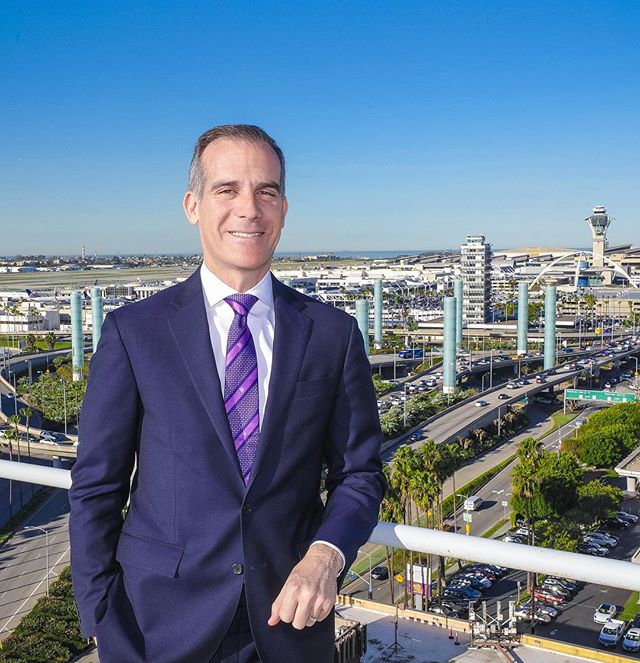
Mayor Eric Garcetti is apparently still stumped on basic questions that remain unanswered regarding the proposed homeless shelter on Paloma Street.
We’ll continue hammering away whether or not he decides to inform the public of why he supports the deal. Same with our questions to Garcetti about the structure of his office and why he has a deputy mayor for economic development overseeing the Department of Building & Safety.
Also still waiting for any response from 14th District LA City Councilmember Jose Huizar about the homeless shelter as well as other matters besides the ongoing federal investigation that centers on him.
Huizar is due by law to answer a separate set of questions forwarded as a request for public records in regard to the finances of Night on Broadway, an annual event that drew a reported 250,000 visitors to Downtown last year, along with various vendors and sponsors. Answers have been promised by May 10.
The sounds of silence also surround 1st District LA City Councilmember Gil Cedillo, who can’t seem to answer any questions since he got approval to take charge of $2 million supposedly intended to help a developer and maintain affordable housing in Chinatown.
Here is a list of the questions that Cedillo has ignored for two weeks, edited for clarity:
- What sort of provisions for public oversights have or will be made in regard to the $2 million fund that Councilmember Cedillo and the 1st District office will establish with a contribution from Atlas Capital Group, the developer of the proposed College Station project in Chinatown?
- What role will the Councilmember and/or his office play in putting the funds to use? Grants to displaced residents? Loans to developers? Any other uses?
- Who will provide the expertise on real estate and finance in regard to the fund?
- Are there any restrictions on the use of the fund?
- How will the use of the fund be reported and explained to the public?
- How was the total contribution of $2 million determined?
Atlas Capital recently was approved to build a 725-unit, upscale apartment complex in Chinatown without any units designated as affordable.
Sullivan Says
 It’s not easy to keep a business prosperous and in family hands for three generations, but that’s what the latest Albert has managed with Al & Bea’s, the restaurant his grandparents Al and Beatrice Carreon started 52 years ago on 1st Street in Boyle Heights, where customers still crowd the covered patio in pursuit of the famous bean-and-cheese burritos and other fare.
It’s not easy to keep a business prosperous and in family hands for three generations, but that’s what the latest Albert has managed with Al & Bea’s, the restaurant his grandparents Al and Beatrice Carreon started 52 years ago on 1st Street in Boyle Heights, where customers still crowd the covered patio in pursuit of the famous bean-and-cheese burritos and other fare.



